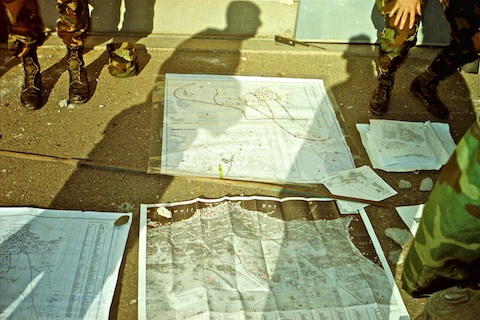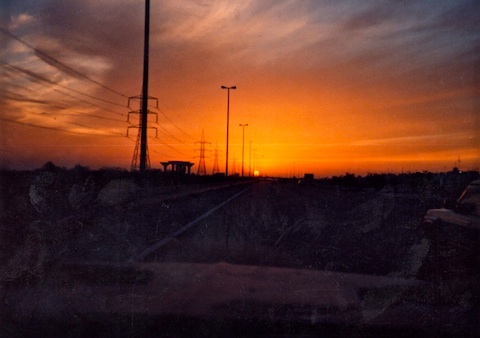Mission Deployed: Kuwait City
Kuwait City—After its liberation on February 28, Kuwait City was under martial law. The absence of local city government required coalition military forces to preserve the peace, provide humanitarian assistance, and help restore basic services. The coordiation of each of these functions became the responsibility of the 352d Civil Affairs Command, commanded by BG Howard T. Mooney, Jr. The job of implementing Gen. Mooney’s program fell to the 432nd and the 431st². Kuwait City was simply divided, the 431st taking the northwest part of town, the 432nd, the east side. A not-so-simple variety of services were provided by engineering, military police, special forces, and a multitude of other support units, both American and non-American.¹

The 432nd undertook its responsibilities by assigning tasks to a wide variety of teams. These included teams for food distribution, public safety, medical needs, displaced civilians, and general purpose teams. After a few weeks of helping local agencies resume operations, the 432nd had a commendable list of achievements:
- 75 key facility pre-damage assessments completed.
- 20 water/food distribution points assessed, 15 cleared and operational.
- Mechanical assessment of 7 local police stations involving 300 vehicles with 30 back in service.
- 12,000 gallons of water coordinated and distributed daily to livestock at several sites in Kuwait.
- Medical team assisstance and supplies to 4 area hospitals and 17 clinics.
- 12 unit volunteers provided daily cleaning and feeding assistance to social hospital for the first 10 days.
- Public safety team developed and coordinated instruction for 21 Kuwaiti police officers in firearms, checking vehicles, patrolling and protective measures.
- Surveyed 402 schools for damage and ordnance to enable rapid reopening of the educational system³.
- Coordinated marshalling convoys and dispatching 200 civilian, fifty-two 40′ semis and fifteen 5-ton military vehicles loaded with emergency relief supplies.
- Surveyed 30 police stations for status of facilities to include building, personnel, commo and transportation.
- Placed 6500 unexploded ordnance warning signs along Kuwait City’s beach front.
- Provided bulk water to hospitals, clinics, bakeries and other key facilities to start up operations.
- Purchased 3 truck loads of animal feed in Riyadh, Saudi Arabia.

McMurry’s Notes
- The oil well fires were really bad. Our camp was a mile from the biggest fire in Kuwait. On days when the wind was blowing seaward, it would get so dark that I literally could not see the front bumper of the truck I was driving. And that was at high noon. And regardless of which way the wind was blowing, we had to regularly wipe the oil off our windshields and mirrors.

Kuwait oil fire smoke. - Mostly the 432nd, as we ended up having to clear a significant portion of the 431st’s sector also. It was a pattern that would repeat itself in Kurdistan when the 431st’s refugee camp was shut down and its residents transferred to our camps.
- The Iraqis used the schools for barracks. Because each school is surrounded by a high wall, they made excellent fortifications. But the Iraqis fouled their nests. Besides tearing out the plumping and electrical fixtures to be shipped back to Iraq, they used the textbooks for toilet paper, the classrooms for garbage dumps and the storage sheds for torture chambers.
One day I almost wasted Captain Stout while we were clearing a school. When we went through the main gate, we split up, each of us searching a half. About 30 minutes later I came to an out building. Leaving the bright sunny day for a pitch black interior left me almost blind. That’s when my peripheral vision caught movement in the shadows to my right. My fingered twitched on the trigger of my M-16 as I turned to confront the threat. It was Captain Stout. Out of his sector. Good thing for him I wasn’t trigger-happy or he would have had a most unpleasant day.
| Page 18 | Page 19 | Page 20 |
